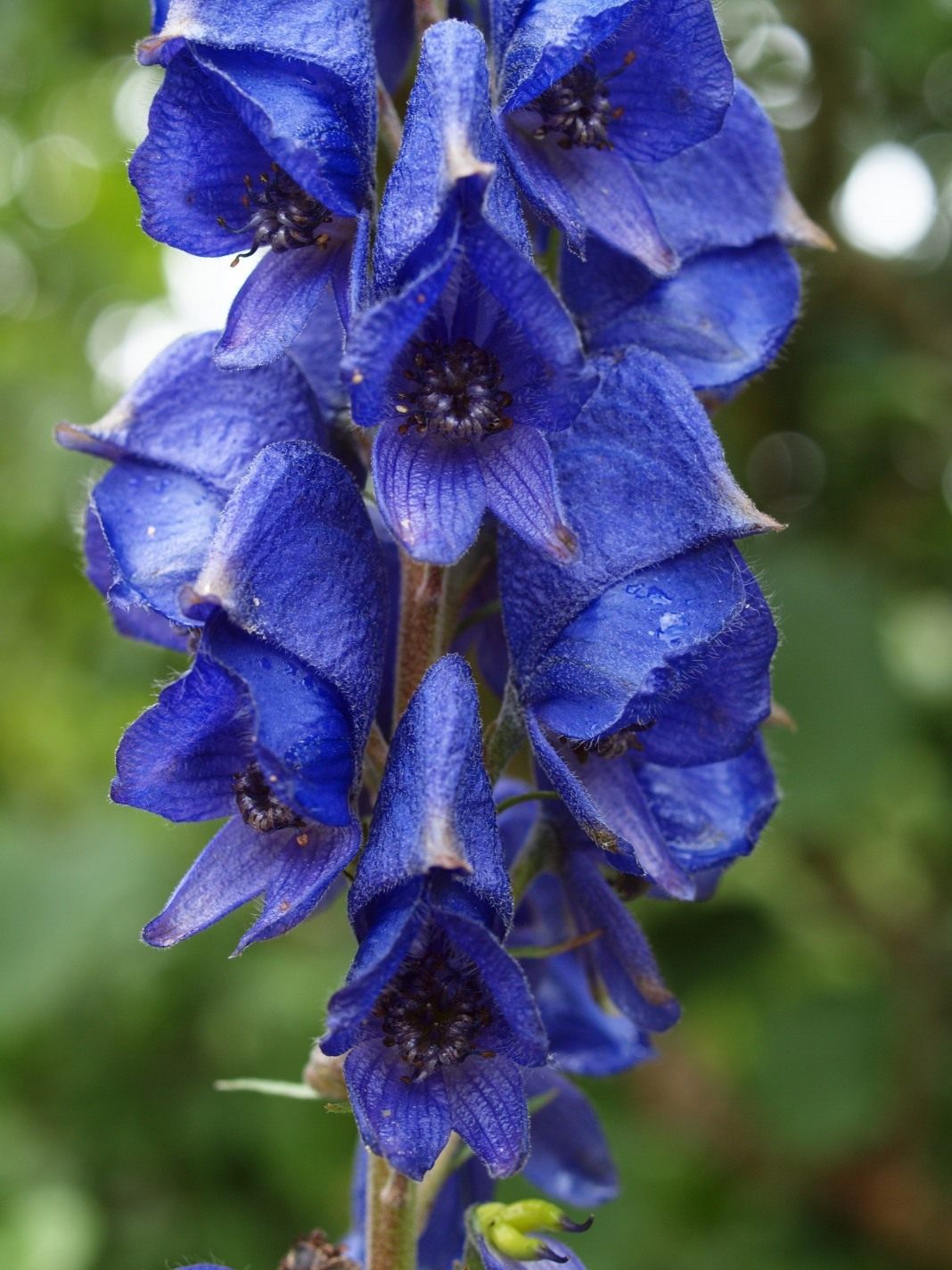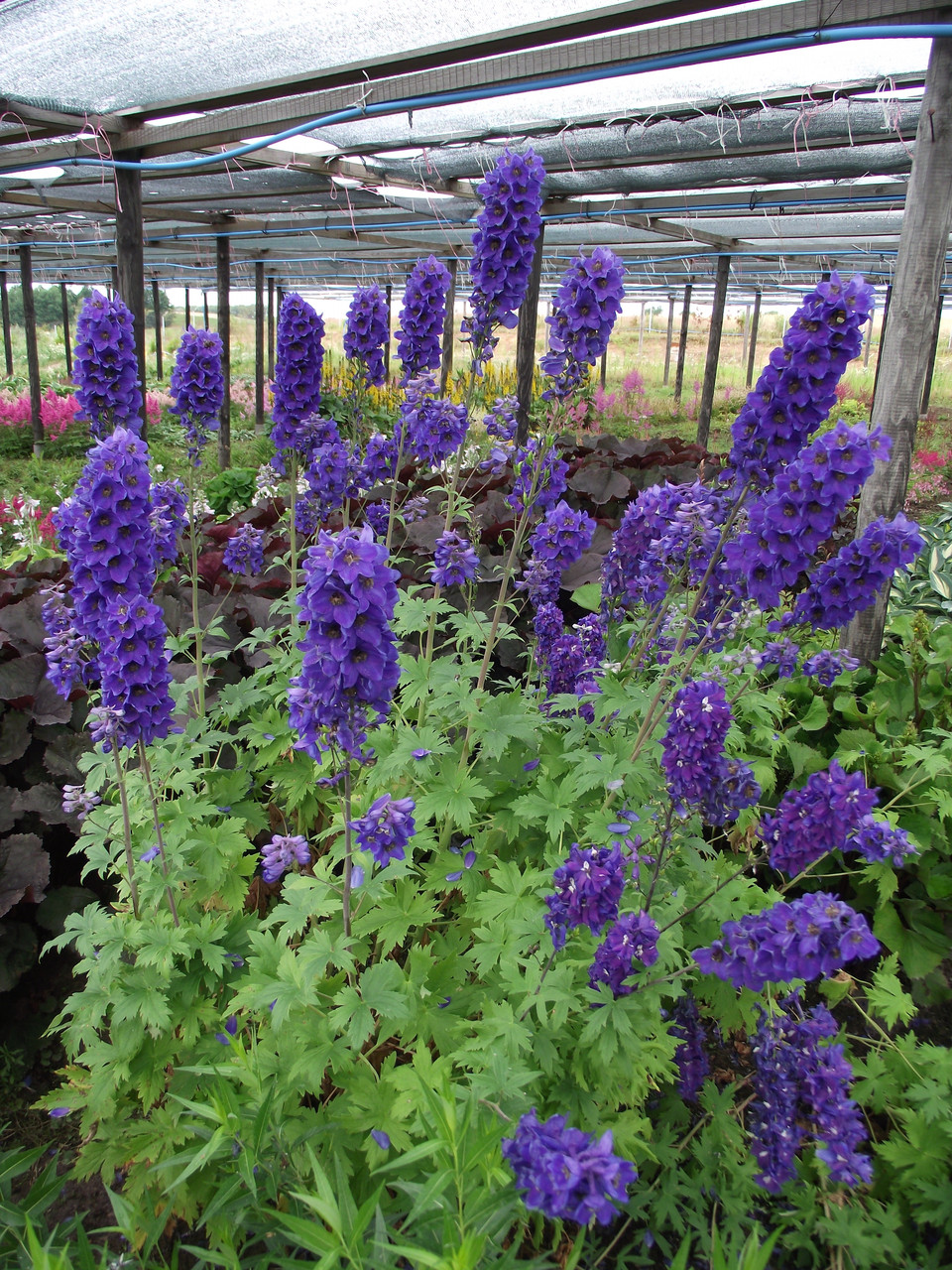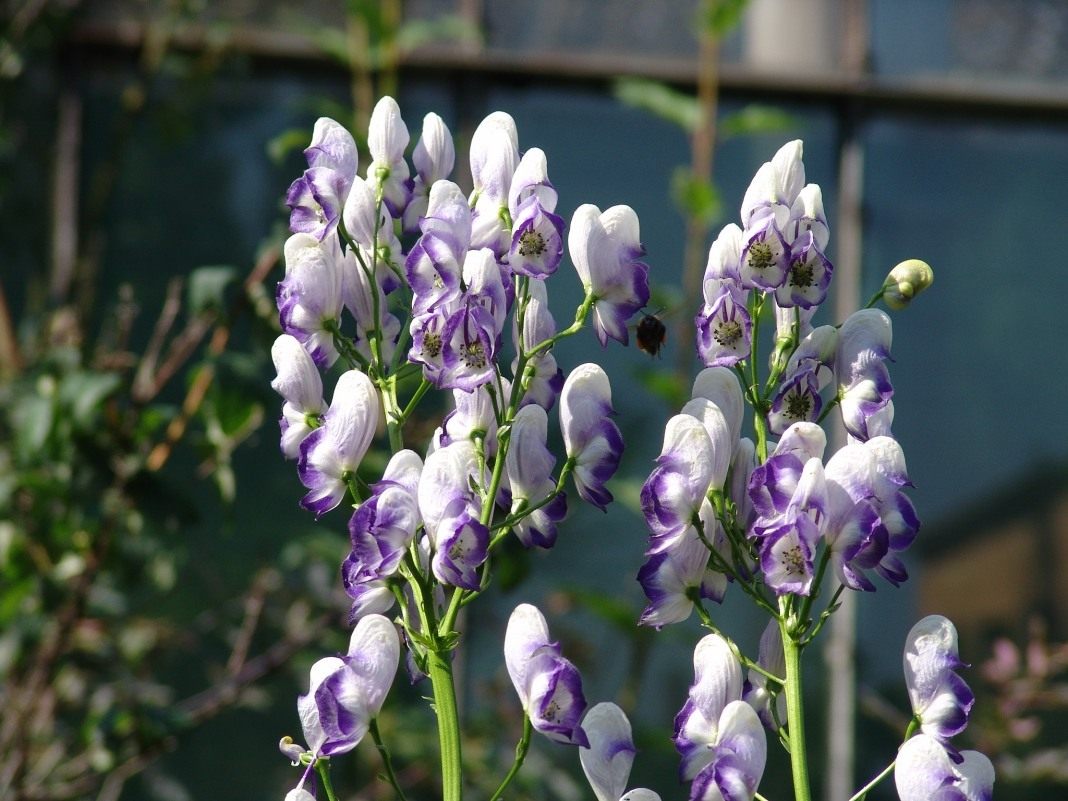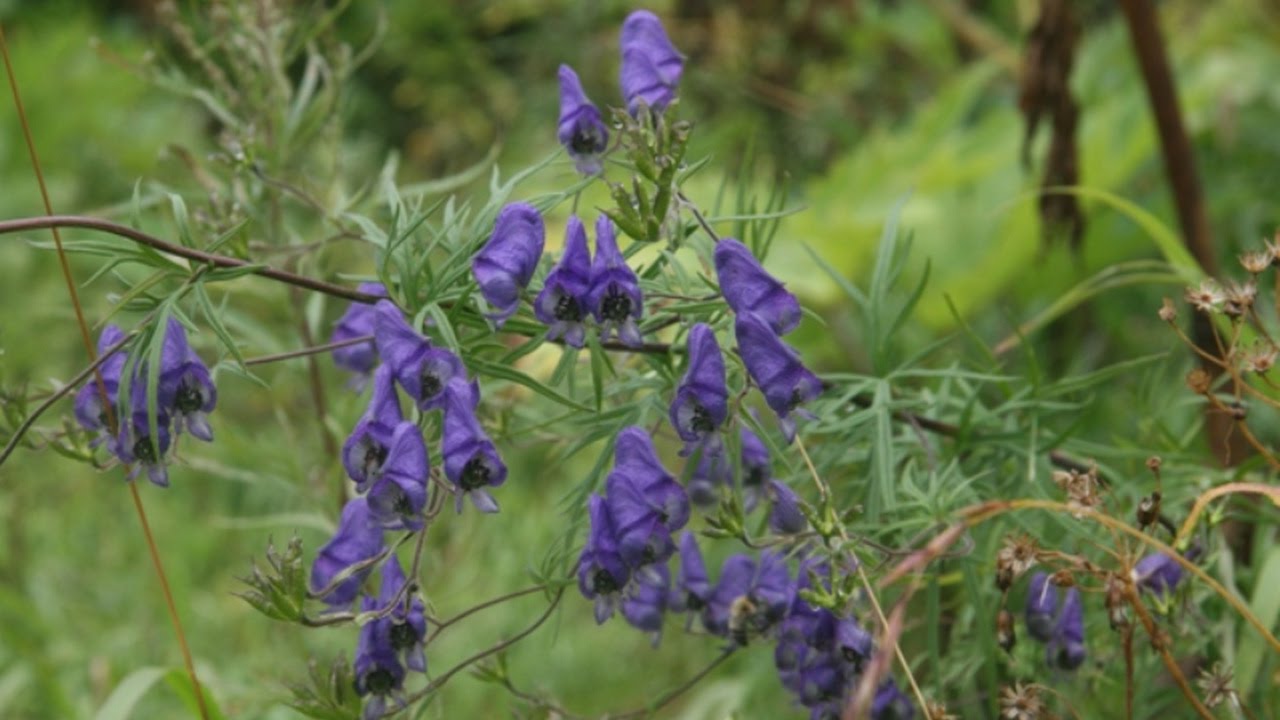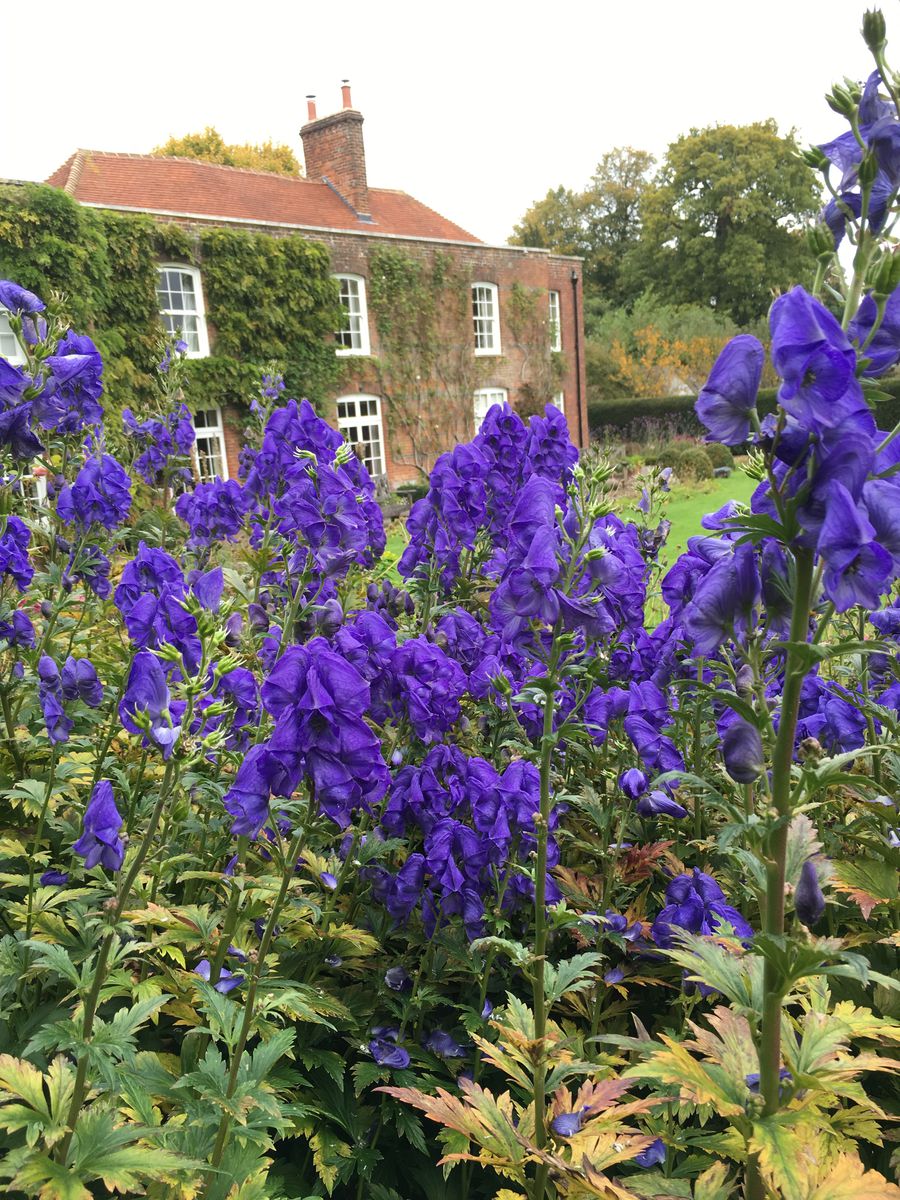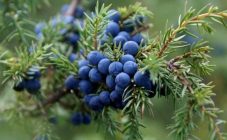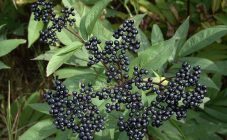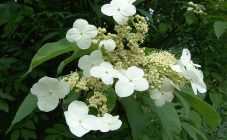Content:
Poison, as the main attribute of a flower, was used in ancient times: the Greeks and Chinese used it for arrows, the inhabitants of Nepal poisoned them with bait for large predators and drinking water during enemy raids.
According to the myths of Ancient Greece, the aconite flower was formed from the poisonous saliva of the hellish dog Cerberus, whom Hercules from the underworld brought to Earth (this was his 11 feat). In accordance with Scandinavian mythology, the name "fighter" appeared as a result of the death of the god Thor, who defeated a poisonous snake and soon died from his dangerous bites.
The toxicity of a flower is determined by its geographic location (climatic conditions, composition and quality of the soil), age. For example, in Norway, animals are fed to them calmly, and the maximum toxicity is observed in southern latitudes. A plant grown on fertile soil, after several generations, completely loses its poisonous attribute.
Aconite is a poisonous medicinal herb of the Buttercup family. The aconite plant, according to the description, grows up to 2.5 meters, has alternate, finger-separate dark green leaves, lobed or dissected. The flowers are large, irregularly shaped, of various colors (blue, purple, yellow, white). The flowering period begins in the second half of summer, lasts 1-1.5 months.
In the wild, aconite is widespread in almost all mountainous regions of Central Europe, giving preference to alpine wet meadows. The soils where aconite grows are rich in fertility. In Russia, the aconite plant is grown exclusively as a decorative element.
Aconite main grades
Aconites are herbaceous perennials with effective flowers, of which there are more than 300 species. The variety depends on how aconite looks like, plants differ in height, color of flowers and shape of leaves.
Most Popular:
- Aconite nodule is the most common in Russia, it is a voluminous bushes with strong, powerful stems, reaches 2 meters, is not afraid of winds, blooms for a long time. The flowers are dark purple in color.
- Klobuchkovy aconite pink - has a fast growth, is not whimsical, extremely poisonous, blooms from July, abundantly and for a long time. The bush is very powerful, spreading, large pale flowers with a dark border stand out effectively.
- Aconite curly - stands out with a curly stem, reaching more than 2 m in length. The leaves of the flower are shiny, finger-dissected, the flowers are large, dark blue. It blooms for an average of 50 days, starting in late July or early August.
- Tall aconite, or northern aconite, is a wild plant found in the forest belt of the European part of Russia, in the mountainous regions of Central Asia and in southern Siberia. It blooms early, already in June, the flowers are large, grayish-purple, the stems are thick, straight.
- Aconite Karmikhelya Arendsey is a frost-resistant variety, characterized by large, bright flowers, they have a blue-violet color, the shape of a shoe.
- Aconite bicolor is a frost-resistant, unpretentious plant. Flowering begins in August, snow-white flowers with a purple or blue border.
- Aconite Arends - blooms not earlier than September-October, reaches one and a half meters in height. The flowers are different, depending on the variety: blue, blue-purple.
- White-mouthed aconite is a herbaceous plant for open ground, with an erect or climbing stem, reaching a height of up to 2 meters. Flowers of different colors: dirty purple, gray-yellow.
- Aconite yellow - a small plant, branched, hairy. It stands out with delicate, yellowish-white flowers with a blue edging, blooms for a long time. It is widely used in neurology.
Agrotechnics
When choosing a soil, some nuances should be taken into account:
- any sort of aconite grows on almost all types of soil;
- planting in heavy stony soils is not recommended;
- fertile soil rich in nutrients and minerals is ideal;
- poor soils are fertilized with humus or compost before planting;
- clay soils are not the best option, as they retain moisture, which has a detrimental effect on the root system of the culture.
Flower reproduction is possible in several ways:
- using seeds;
- by dividing the bush;
- cuttings;
- root tubers.
Reproduction of a plant by seeds is considered the most laborious, since the procedure for obtaining healthy seedlings takes a lot of time and effort. Stratification is carried out in advance, for this, seeds are planted in open ground before winter, or a container with moist soil and seeds is placed in a refrigerator until April. Then the seeds are planted in prepared boxes with fertile soil. Seedlings are watered regularly. When 2 true leaves appear, the plants dive. In August, they are planted in open ground.
Manipulation for dividing the bush is carried out in the spring, before the start of active growing season. Carefully dig out the bush, divide it with a sharp bayonet shovel into 2-3 parts, so that each of them has 2-3 healthy buds and roots. The plots are planted in pre-prepared holes, the root collar is buried no more than 2-3 cm.
To propagate aconite flowers by cuttings, in the spring, preferably in May, a shoot with a heel, at least 10-13 cm, is cut from a bush and planted in the ground. To create a greenhouse effect, cover with a film or a plastic bottle.
To propagate aconite with root tubers, you must carefully remove a couple of tubers from under the plant in spring. They are planted in small depressions (5-7 cm).
The process of further cultivation is quite simple: care consists in watering, loosening the soil and systematic fertilization. Watering is recommended 2 times a month, faded inflorescences are promptly removed.
Culture properties
Aconite flower is a herbaceous perennial, successfully used in homeopathy and folk medicine, due to its medicinal and poisonous properties.
The main medicinal properties of the plant:
- anti-inflammatory;
- pain reliever;
- calming;
- antiallergic.
Tincture of aconite is used as an antipyretic agent for colds. Medicines, which include aconite, reduce the severity of pain, fight hypertension and have a beneficial effect on the cardiovascular and respiratory systems.
Tinctures, ointments and decoctions are produced from the plant. The scope is wide enough: it is used for headaches, radiculitis, used as a homeopathic remedy in the treatment of neuralgia.
Woolly is effective for infectious diseases, diabetes and venereal diseases. It is used for psoriasis, skin ulcers, has antimicrobial and wound healing effects.
The poisonous properties of aconite
Absolutely all types of wild-growing aconite are poisonous, to a greater or lesser extent. The toxicity of the flower is due to the presence in its composition of the alkaloid aconitine.When it enters the human body, the poison has a paralytic effect: initially the mouth muscles go numb, then the arms and legs, convulsions appear, and paralysis of the respiratory tract occurs.
Diseases and pests
Despite its toxicity, aconite is susceptible to diseases and pests.
Banded mosaic virus appears as light green masses on the leaves, which soon turn brown. The affected areas require removal.
Powdery mildew is characterized by the formation of a white powdery coating on both sides of leaves, petioles and flowers. Plant tissue under this bloom dies, acquiring a brown color. Severe damage to the plant with powdery mildew requires the use of drugs: Purest flower, Topaz, Strobi. With a small lesion, use Fitosporin-M, Alirin-B.
Root rot - stagnation of moisture in winter negatively affects the root system of the plant. The roots become soft and rotten, the shell quietly separates from the root core. Poor soil drainage and low acidity are provoking factors. To prevent rot, it is necessary to provide the plant with good drainage, use coarse-grained substrates.
In addition, the plant is attacked by rape flower beetle, spider mites, aphids and nematodes. Insecticides are used to combat.
Useful information about the plant
The lethal dose of the alkaloid aconitine for a person is 0.002 g, that is, it is enough to use only 1 g of a freshly cut root to soon die of paralysis of the respiratory system.
The most poisonous is the Dzungarian aconite, characterized by dark purple flowers.
The use of the plant has its own contraindications: children under 5 years of age, a history of hypotension, pregnancy and lactation.
The use of aconite as a landscape design has gained particular popularity. Stand-alone plants on the lawn, dense flower beds of aconite and "curly walls" from the plant look spectacular. Suitable for bouquets, mixborders and discounts. For planting at home, it is important to protect the flower from free access to it by children and animals, since contact with it is very dangerous.
